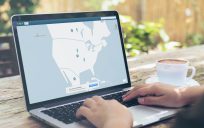 We live in a time of historic distrust in institutions, especially governments. As a former Fed and a believer in public service, this greatly troubles me. There are no simple solutions to repair this rift. However, I (along with many others) believe an important part of the answer lies in open data.
We live in a time of historic distrust in institutions, especially governments. As a former Fed and a believer in public service, this greatly troubles me. There are no simple solutions to repair this rift. However, I (along with many others) believe an important part of the answer lies in open data.
A Brief History of Open Data
The open data movement has its roots in eight open-government data principles aimed at increasing transparency and trust in government. These ideas include no-brainer concepts that data should be accessible, current, machine-readable and non-proprietary to name a few.
These ideas led to the creation of data.gov. Today, there are over 300,000 US government datasets available to download from the site.
While we can count the number of datasets available, the impact this data has had in our lives is immeasurable. We are all beneficiaries of this data, even if we don’t realize it. If you check the weather on your phone, search online for homes for sale or research a used car, you are likely interacting with data from data.gov.
Nonetheless, this is not enough to inspire trust.
Jason Saul, a Principal Advisor to the Impact Genome Project, argues that trust in government is at an all-time low because of poor program performance. The fact that entrepreneurs built businesses off of government data is great for our economy and our lives as consumers. However, open data only builds trust when it benefits citizens.
Who CARES?
I recently had the opportunity to meet with someone taking on this challenge.
Chris Fulcher is the Director of the Center for Applied Research and Engagement Systems (CARES) at the University of Missouri Extension. Since 1992, Chris and his team of self-described “data nerds” have been integrating data, mapping, visualization and engagement tools to better serve vulnerable and underserved populations. This work enables public and nonprofit organizations to address issues affecting food, farms and families.
CARES flagship product is the Engagement Network, which is super-charged by open data. The site provides public access to a “national Map Room” with 15,000+ data layers from USDA, HUD, Census, IRS and other organizations. This allows mapping and reporting on topics ranging from poverty to diversity and everything in between.
These capabilities are available to anyone and used by numerous groups, such as the city of Rochester, NY and the American Heart Association. These groups use the data and maps to tell stories and inspire change.
An example of how this data is used is the Location Opportunity Footprint Tool (LOFT). Created by CARES, the tool uses HUD data to allow users to find areas with an intersection of good schools, job openings and low housing and transportation costs. Neighborhood leaders seeking a grant or preparing for a community planning meeting can use this data to find opportunities to drive real change, actually inspiring trust in government.
The great strides by Chris and CARES show how open data can address social, economic, environmental and public health issues. Their only limitation is the data not accessible to them. They need organizations to be transparent and publish more and more data.
How Can You Help?
If you’re an aspiring data leader, there are many resources available to help you start or expand an open data program.
For example, Open Knowledge International is a global non-profit organization focused on promoting open data. They published an open data handbook to aid organizations in sharing and using data. They recommend three rules, all of which sync with my personal experience.
- Start by opening up just one dataset as quickly as you can. Use APIs or post it on a website like Data.gov.
- Interact with the potential users of your dataset to ensure your data is as relevant as possible.
- Be ready to answer questions and address fears about the perceived risks of open data.
The hardest part is choosing which datasets to share. These datasets must be ones to which you can apply an open license. In order to do this, you really need to understand your data. Is the data in question propriety? Does it conation PII, PHI or other sensitive information? It’s important to ask these and other questions.
Any organization that wants to open their data will quickly see the need for enterprise data governance. If you don’t understand your data, where it is or what it is, you cannot share it effectively.
Final Thoughts
The opportunity to use government data to take action on social problems is too big to pass up. The more accessible, discoverable and usable data is, the bigger impact it can have on policymaking, scientific advancements and business.
Clearly, we all have a lot to gain from open data. In the end, however, our democracy may be its biggest beneficiary.
You may also be interested in It’s Time for More “Actionable” Open Data and Should This Be the Future of Open Data?.
Jonathan Alboum is part of the GovLoop Featured Contributor program, where we feature articles by government voices from all across the country (and world!). To see more Featured Contributor posts, click here.





Getting citizens involved in government by sharing data is so important. Modernizing the way this info is shared seems to be a big focus across the country, particularly for many local governments! Cities sharing data with their communities have definitely seen the results.